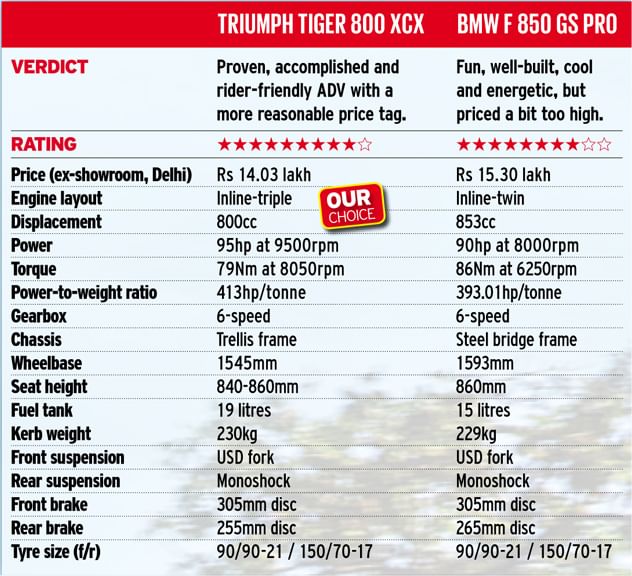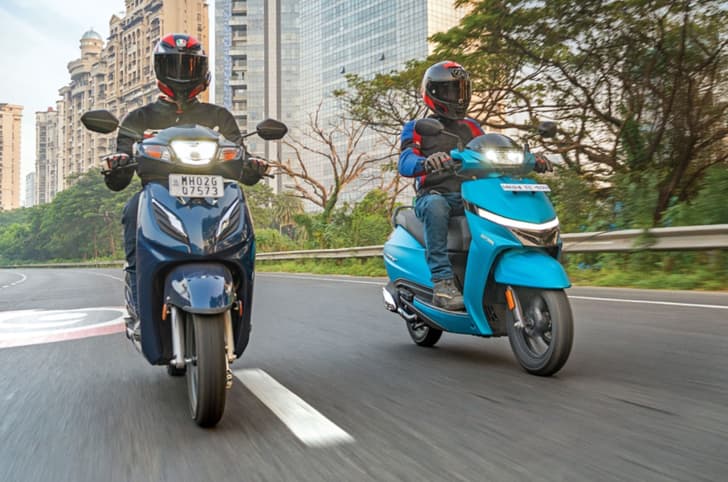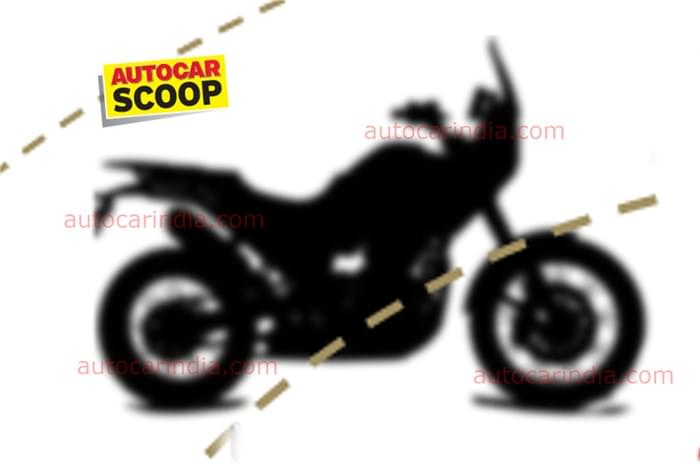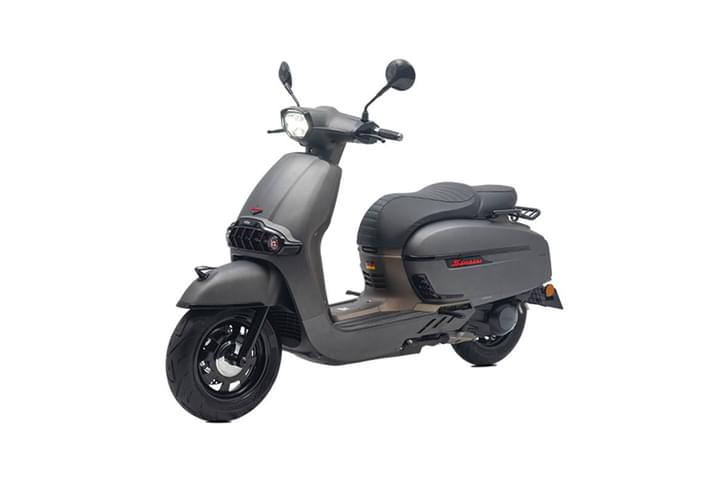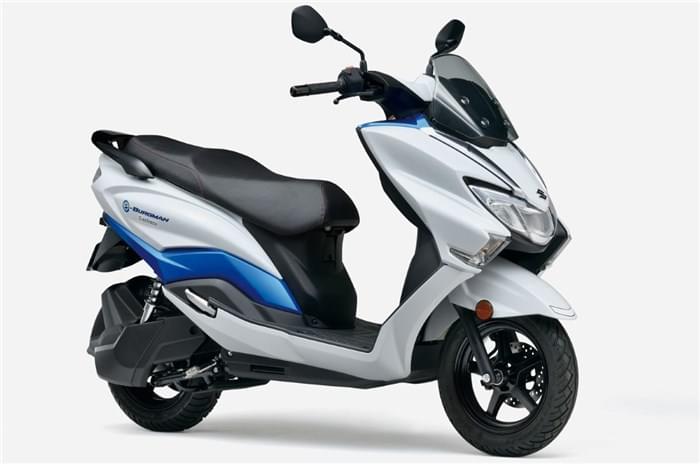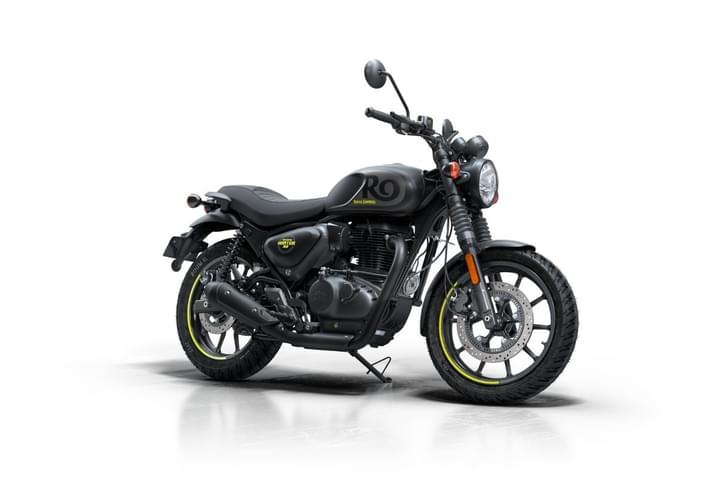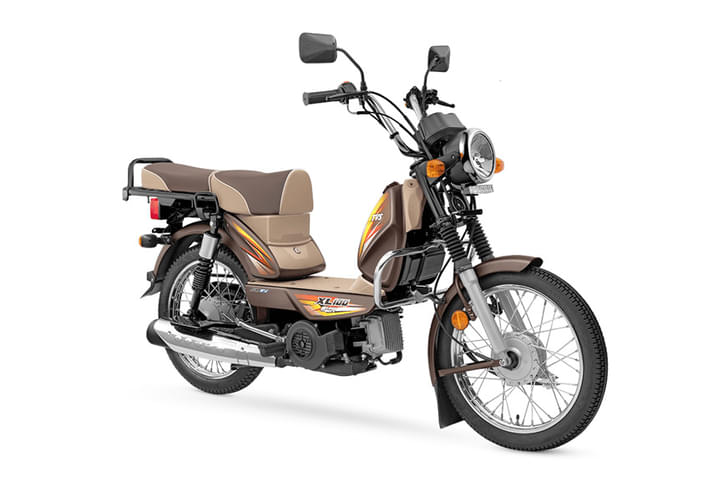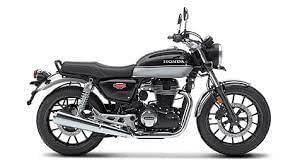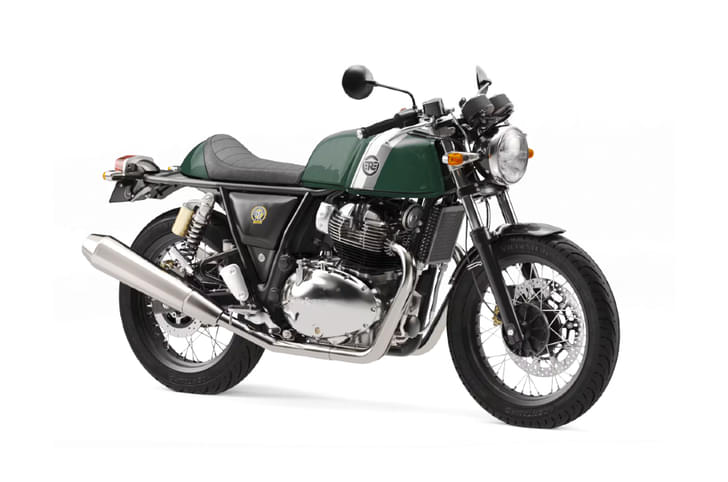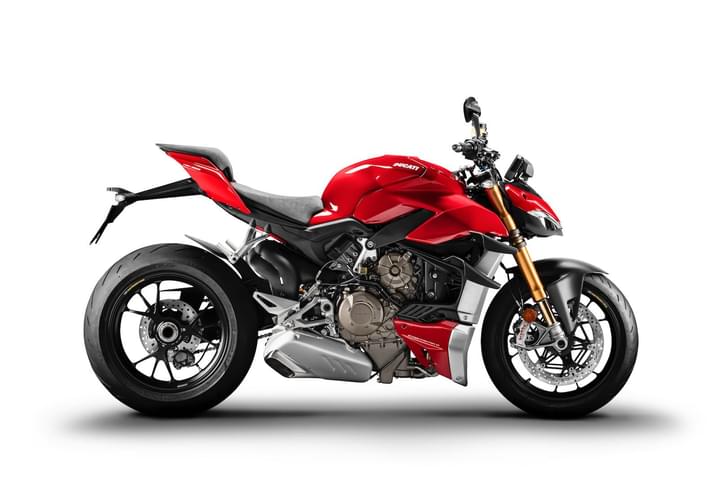Now is a good time to mention I’m a big fan of BMW Motorrads. For years, I have firmly believed anything that wears a prop-blade emblem on its sleeve is vastly superior to everything else. Barring the G 310 GS, I have experienced BMWs that feature an obsessive level of detailing and it’s natural to feel they aren’t built by humans or at least not by those with friends and a buzzing social life. BMWs are almost completely weird, and I love them. But I also really love my Triumphs.
I happen to have met a few important cogs in the Triumph machinery and I know that they are regular guys like you and me, with wives and kids and a fairly standard understanding of post-work hours and weekends. They love motorcycles, they love building them even more and, most of all, they love riding them. Two of the motorcycles they currently produce belong to my list of Top 10 motorcycles (but hey, I have about seven more such lists) and I struggle to remember the last time I rode a Triumph that wasn’t fun. Actually, I do – it was called the Speed Triple. My heavily influenced brain, therefore, found itself at an unexpected intersection when I was asked to pick from between the two motorcycles we’ve brought along.
The Tiger, at least a couple of years ago, was Triumph’s highest selling motorcycle in India – yes, despite a competent Bonneville range – and we’ve ridden so many of them just in the last year, there’s a running joke about that in the office. The version that qualified for this test is the 800 XCX – the top-spec, off-road-focused variant with wire-spoke wheels, considering we don’t get the fully-loaded XCA in India yet. The BMW, we haven’t met so far. It’s called the F 850 GS and I’m informed it’s the Pro version – the other two variants are ‘Standard’ and ‘Pro Low Suspension’. If you haven’t seen one on the roads yet, it’s because it has gone on sale barely four months ago and is not exactly an inexpensive motorcycle. The GS’ Pro variant with the Rallye paint scheme (the spec our test bike came in), in fact, retails for Rs 15.30 lakh, although you can have one without the TFT and the special livery for Rs 14.40 lakh (ex-showroom; it’s a CBU, don’t forget). The CKD-import Tiger 800 XCX is, meanwhile, a Rs 13.89 lakh motorcycle. Are you really going to put expensive motorcycles like these onto a muddy, rocky trail?

No? I thought as much! We didn’t want to either (although we did, eventually) and so we set off onto the nearest interstate highway. The Tiger’s headlights lit up the four-lane amply enough for me to sustain decently high speeds, although Rishaad made every attempt to blind me with the sparkling white LED headlights (evidently not as effective as they appear) of the GS bouncing off my mirrors. Daylight brought some relief, and we were now sustaining triple-digit speeds rather comfortably.
The Tiger’s 800cc creamy triple is particularly effortless down the open road, and with 95hp and 79Nm of torque available, it can go from being a calm mile-munching chariot to a sportbike-chasing missile within seconds. That howl from the triple is addictive and you’ll find yourself wanting to hear it at full chat often, especially through tunnels. However, the Tiger’s real character lies in just how rider-friendly it is. You can short shift into 6th gear at roughly 40kph and it accelerates from that point to well past 100kph in a matter of a few seconds, which reduces the need to shift gears drastically. It’s also always refined and linear, which keeps your nerves soothed – something that’s fundamental to a long day in the saddle, especially on the Great Indian Highway, which is a vivid canvas of erratic driving styles, cattle and often, the unthinkable. What also contributes to stress-free progress is the 6-speed gearbox, which is a precise unit that’s slick enough to make you not notice the lack of a quickshifter. The Tiger fits the adventure-tourer bill better than most other motorcycles in its class largely because it’s one of the least tiring motorcycles to ride. While just about any premium motorcycle on sale in India today will do a 1,000km riding day, the Tiger ensures you end that sort of ride feeling nearly as fresh as you did when you woke up.
The GS’ 853cc parallel-twin is peppier in comparison. It feels more urgent, with pronounced mid-range grunt, and the 270-degree firing order lends it a deep rumble and beat. This motor feels entirely unlike the characteristically romantic ‘boxer’ engines BMW is so revered for – I must admit being a touch disappointed due to this – but a parallel-twin is perhaps best suited to this segment, given the usage pattern and price barrier it has to fit within. The India-spec 850 GS produces 90hp and 86Nm of torque (5hp and 6Nm down on the Euro-spec; our bike is setup to drink regular unleaded fuel, though) and there’s nothing the motorcycle does to hide its credentials. You can feel it raring to wheelie or spin up the rear wheel and, especially in the initial stages, you feel thankful for BMW’s meticulousness with regards to offering electronic assists. It also comes equipped with a quickshifter, although it only works to perfection past 4,000rpm and the gearbox, overall, isn’t as smooth as on the Tiger – a bummer, considering just how amazing gearboxes on some of the bigger BMWs can be. Having said that, the GS is involving all the way and it keeps things exciting, which works for those of you who find adventure tourers too sedate. Over a really long riding day, though, it’s the Tiger that will keep you in better spirits.
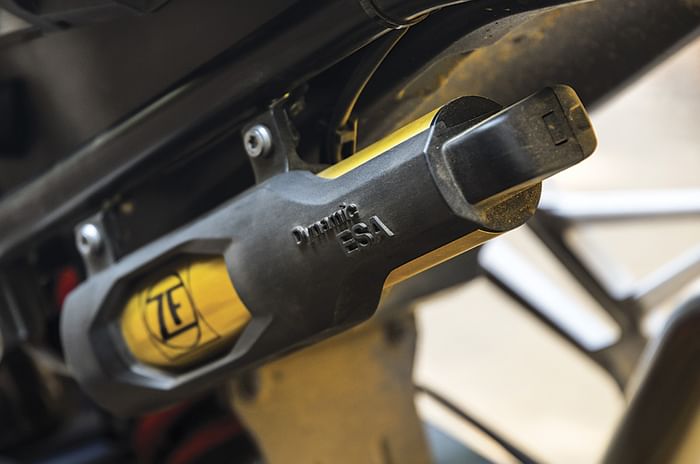
It’s neck-and-neck in the electronics department as well. The Tiger gets five riding modes – Rain, Road, Off-road, Off-road Pro and Sport – each of which is individually customisable using a very intuitive set of controls. Both motorcycles get cruise control and what the off-road enthusiasts amongst you will appreciate is that the GS lets you turn off ABS and traction control on the move (the Tiger demands pulling over) and also remembers your last mode selection when you restart the bike. However, the GS’ controls aren’t the most intuitive and will take some time getting used to. It does feature the very cool Multi-Controller – a sort of iDrive for bikes – on the LHS handlebar which works as a dial or even a click-function button and also offers selection through the several menus and sub-menus in a four-directional motion. This is the sort of uber cool thing that will make you go ‘Wow!’ except I didn’t even spot it for the first 200km! The GS also offers five modes – Rain, Road, Dynamic, Enduro and Enduro Pro – the last of which (like on the Tiger’s Off-road Pro) turns all systems off. What’s not nice is that the GS’ TFT (which is slicker than the Tiger’s in its appearance) pictured here is an optional extra (roughly Rs 60,000 a pop) – this is not going to thrill people who know even a KTM 390 Duke comes with one as standard. Lastly, both bikes lose points for not offering backlit switches, especially since they offer multitudes of selections, not all of which you can remember (or am I just slow?).
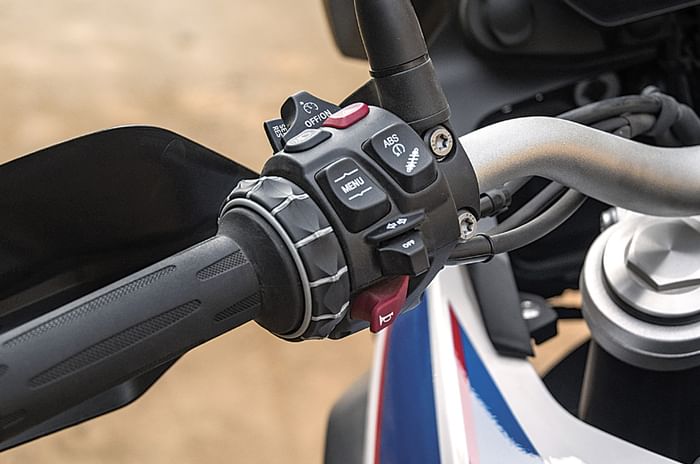
Off the road is where a clear distinction emerges between the two motorcycles. The GS, in Enduro Pro mode, feels energetic and eager to slide around but it’s the Tiger that feels more stable and planted in comparison. The latter also seems to be able to find more traction over loose surfaces and its more progressive motor generally helps smoothen out even too-aggressive inputs. In comparison, the GS is a bit volatile and perhaps less forgiving, although the dependable suspension and brakes do compensate for the engine’s eagerness. I found myself relying heavily on the BMW’s electronics, something I’m not strongly fond of, and for once, I was thankful for having such an elaborate rider-assist suite available to me.
While both do an astonishing job of mud-plugging – you definitely won’t believe what motorcycles of this size can do – it’s the Tiger that’s friendlier and less fatiguing. I rode it up a fairly serious trail – with a pillion and luggage – and found myself feathering the throttle in as high as third gear, with that being possibly the most fuel-efficient of my saddle time with the Tiger. The Tiger’s metal bash plate also gives you that crucial extra bit of confidence, and the noticeably better front-end feedback and control helps you venture forth more cheerfully than on the GS. I suspect the Tiger would have fared even better than it did on newer tyres; our test bike’s tyres were worn out to the point of being squared out! The Tiger – and I apologise for my inability to resist this – is clearly the king of the jungle.
Practicality is a great leveller – okay, maybe I just made that up – and it’s a close fight between the two in this regard. The Tiger scores here by offering a height-adjustable seat, a more forgiving motor, better pillion comfort and overall greater stability, but the GS does have its bonuses in the form of its tubeless tyres and a motor that runs far cooler, especially in traffic. On the highway, you will appreciate the Tiger’s 19-litre fuel tank more than the GS’ 15-litre unit, and (this bit is subjective) also its tall windscreen which offers ample wind protection; although the GS’ short screen is better for hot days. But then comes the crucial aspect of ownership and running costs, both of which are lower on the Tiger and considering its popularity, availability of spares is also bound to be less of an issue. Having said that, the GS does feel better put together and that obsessive-BMW eye for detail I mentioned earlier shines through in every single mount, bracket and weld, something that will matter to you when you’re paying this kind of money for a motorcycle.
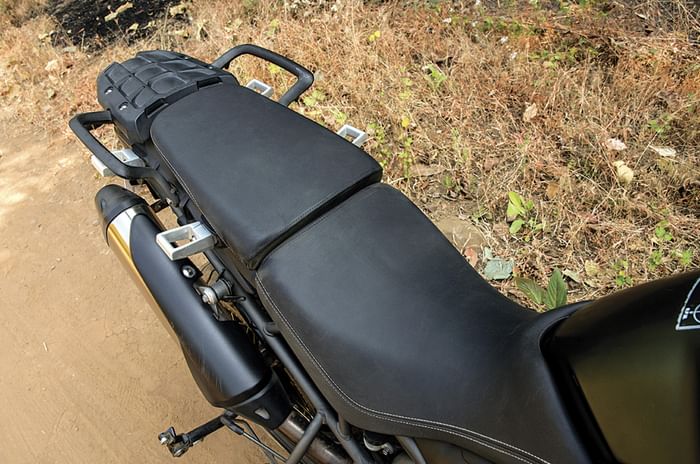
To answer the question I posed in the introduction to this story, the temptation to give into the BMW badge somewhat diminishes given that the GS lacks the outright classical appeal of owning a prop-blade-badged motorcycle. It’s fast, well-equipped and feels expensive, but it is expensive and perhaps a bit unforgiving to appeal to a wider range of enthusiasts. BMW could have justified charging a premium had it equipped the GS with that irresistibly smooth and cool boxer engine, but the Triumph just offers that crucial bit extra in a friendlier, more rounded package at a relatively reasonable price. Overall, the GS is fun and capable, but it’s the Tiger that rules, both, the jungle and its man-made equivalent.
